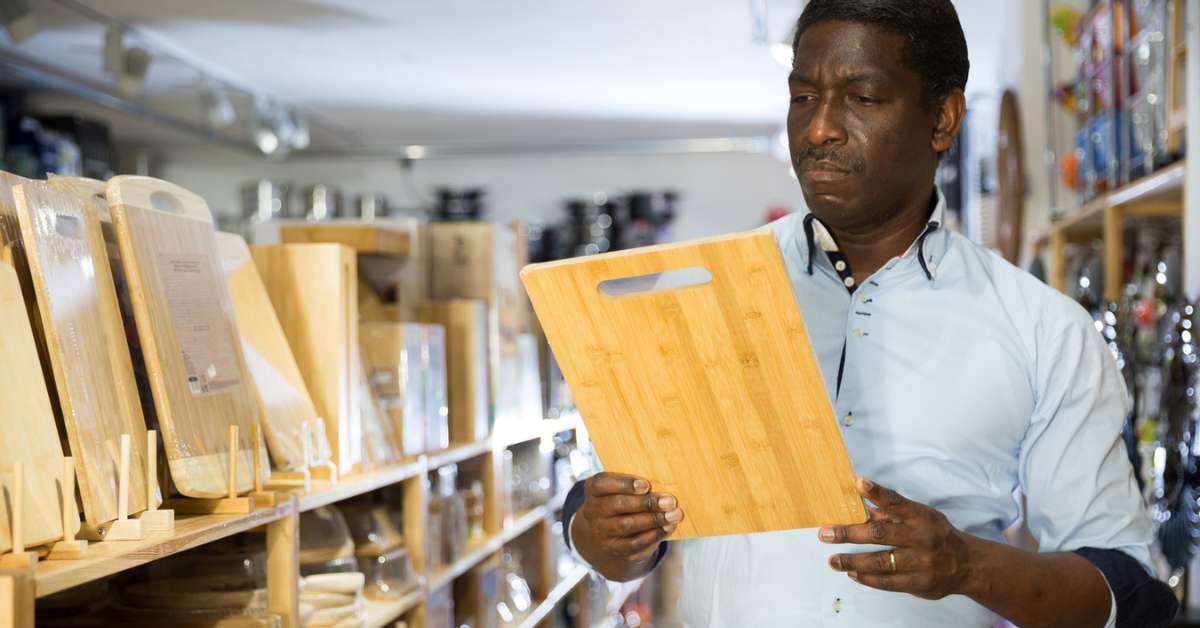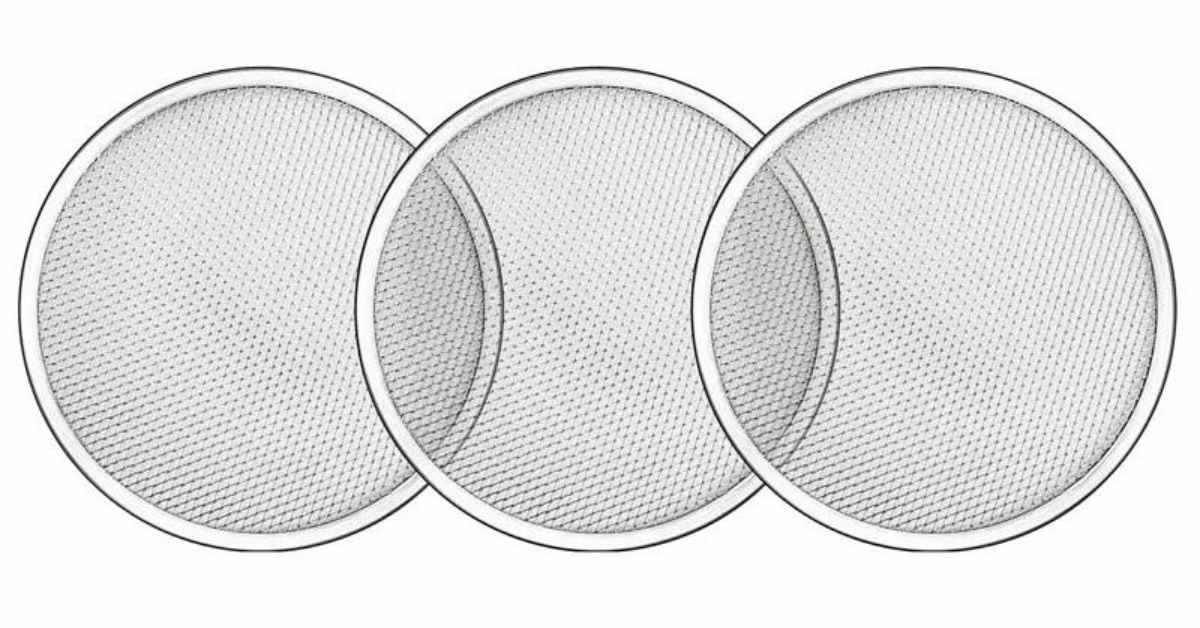Are you a baking enthusiast with an ever-growing collection of cookie cutters? Keeping them organized and in top condition is essential for unleashing your culinary creativity. In this guide, we’ll explore a range of practical tips and tricks for storing your cookie cutters efficiently in 2023.
From innovative storage solutions to preventive measures, we’ve got you covered. Let’s explore the world of cookie-cutter storage together and ensure your baking adventures are always hassle-free.
Table of Contents
ToggleAssessing Your Cookie Cutter Collection
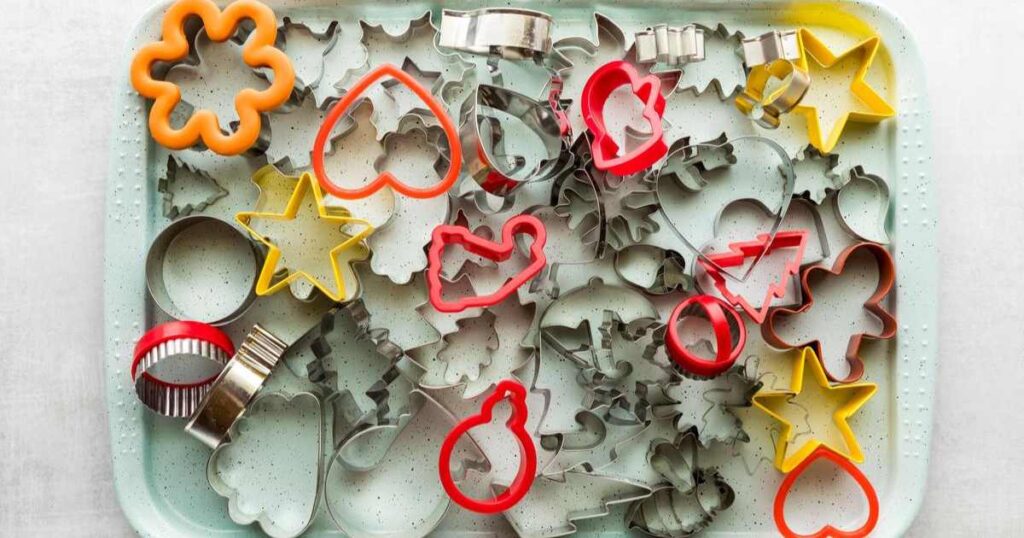
Before diving into storage solutions, take a moment to evaluate your cookie-cutter collection. Sort your assortment to identify duplicates, damaged pieces, or rarely-used shapes.
This process declutters your collection and helps you visualize the storage space needed. By understanding the scope of your display, you’ll be better prepared to choose the most suitable storage method.
Look for rust or corrosion, and set aside cutters requiring special care. Now, let’s explore the optimal storage options for your unique assortment.
Types of Cookie Cutters
When it comes to cookie cutters, they come in various materials, each with its own set of advantages and care requirements.
Metal Cookie Cutters:
These classic cutters are durable and often have intricate designs that create beautifully detailed cookies. However, they are prone to rust if not stored properly. To prevent rust, ensure they are scorched before storing, and consider applying a thin layer of food-safe oil before long-term storage.
Plastic Cookie Cutters:
Lightweight and affordable, plastic cutters are perfect for beginners and kids. They are easy to clean and less likely to rust, but they may warp over time if exposed to high heat. Store them flat or hang them to maintain their shape and usability.
Silicone Cookie Cutters:
Flexible and non-stick silicone cutters are great for intricate shapes and delicate dough. They are easy to store as they can be rolled up or stacked without losing shape. While they don’t rust or warp, they can accumulate dust, so keeping them in a sealable bag or container is a good idea.
Considering the material of your cookie cutters is the first step in choosing the proper storage method to maintain their quality and extend their lifespan.
Choosing a Storage Solution
Selecting the ideal storage method for your cookie cutters ensures they remain organized, easily accessible, and pristine. Here are a few effective options to consider:
Container with Dividers: Invest in a container with adjustable dividers to create customized compartments for your cookie cutters. This prevents them from touching and potentially getting damaged.
Hanging Rack: A hanging rack allows you to display your cookie cutters while keeping them well-organized. Opt for S-shaped hooks to maximize space and quickly locate your desired edge.
Magnetic Strip: Attach a magnetic strip to the inside of a cabinet door. Metal cookie cutters will adhere to the strip, saving counter or shelf space.
Airtight Containers: For plastic or silicone cutters, airtight containers prevent dust accumulation and keep them safe from moisture.
Shoe Organizer: Hang a clear, over-the-door shoe organizer on the back of your pantry or cabinet door. The pockets provide convenient storage for a variety of shapes and sizes.
Drawer Inserts: Place drawer inserts or organizers in a kitchen drawer to create sections for different cookie cutters.
When deciding on a storage solution, consider your available space, the types of cookie cutters you own, and your preference. Keeping the edges clean and dry before stowing them away is essential, whichever method you choose.
Organizing Your Cookie Cutters
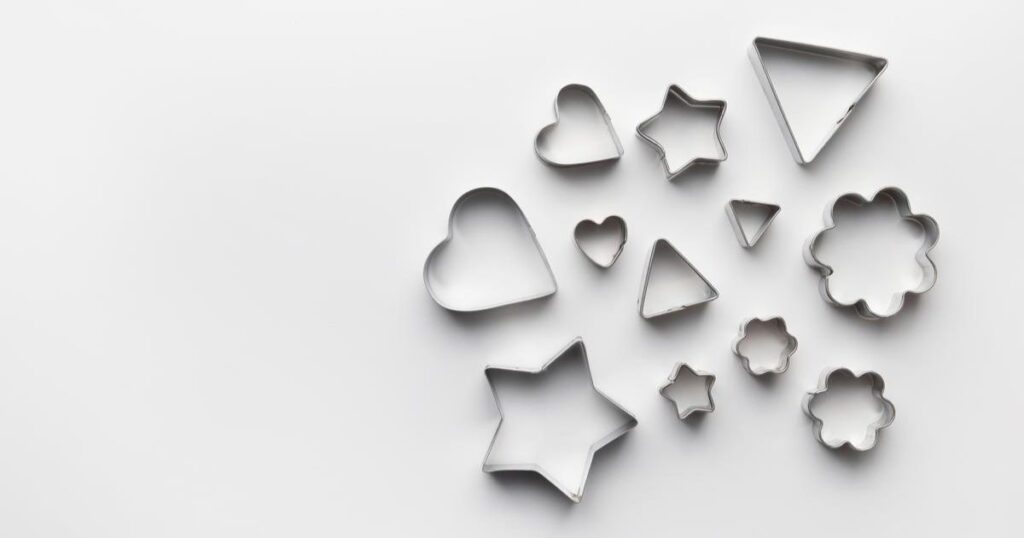
Efficient organization is the key to easy access and a clutter-free baking experience. Follow these steps to keep your cookie cutters neatly arranged:
Categorize by Theme or Shape: Sort your cookie cutters into categories based on themes (e.g., holidays, animals, letters) or shapes (circles, stars, hearts). This makes it simpler to locate the cutter you need for specific occasions.
Labeling: Consider labeling the dividers or compartments in your storage container. This adds an extra layer of organization and saves time when searching for a particular shape.
Frequency of Use: Place the cookie cutters you use most frequently at the front of your storage solution. This minimizes the time spent rummaging through the collection.
Group Similar Sizes: If you have multiple cookie cutters of similar sizes, group them. This prevents them from shifting around and helps maintain their condition.
Regular Maintenance: Periodically review your collection and remove any cutters you no longer use or show signs of damage. This keeps your pool streamlined and functional.
Rotate Display: If using a hanging rack or magnetic strip, periodically rotate the displayed cutters to ensure equal usage and prevent any one edge from exerting excess pressure on the storage medium.
By following these organization strategies, you’ll have a well-ordered cookie-cutter collection that enhances your baking endeavors and brings creative joy to your kitchen.
Best Practices for Storing Cookie Cutters
To ensure the longevity and pristine condition of your cherished cookie cutters, consider these best practices for storage:
Begin by thoroughly cleaning and drying your cookie cutters before storing them. This helps prevent any residue or moisture from compromising their quality during storage.
If you use a container with dividers or compartments, ensure each cutter has its designated space. Placing similar shapes together can prevent them from rubbing against each other and potentially getting damaged.
For hanging racks or magnetic strips, ensure each cutter is spaced correctly and not overcrowded. This prevents any undue pressure or warping that could occur over time.
Regularly inspect your stored cookie cutters for any signs of rust, especially metal ones. Apply a light coat of food-safe oil on metal cutters to prevent rust formation during storage.
Keep your storage area clean and free from moisture. A dry environment helps prevent mold growth and rust on metal cutters.
Avoid exposing plastic and silicone cookie cutters to direct sunlight or high heat, as these materials can warp. If storing near a heat source is unavoidable, opt for another storage method, like an airtight container.
By adhering to these best practices, you’ll preserve the quality and functionality of your cookie cutters and ensure they remain a delightful part of your baking adventures for years to come.
Cleaning and Maintaining Your Cookie Cutters
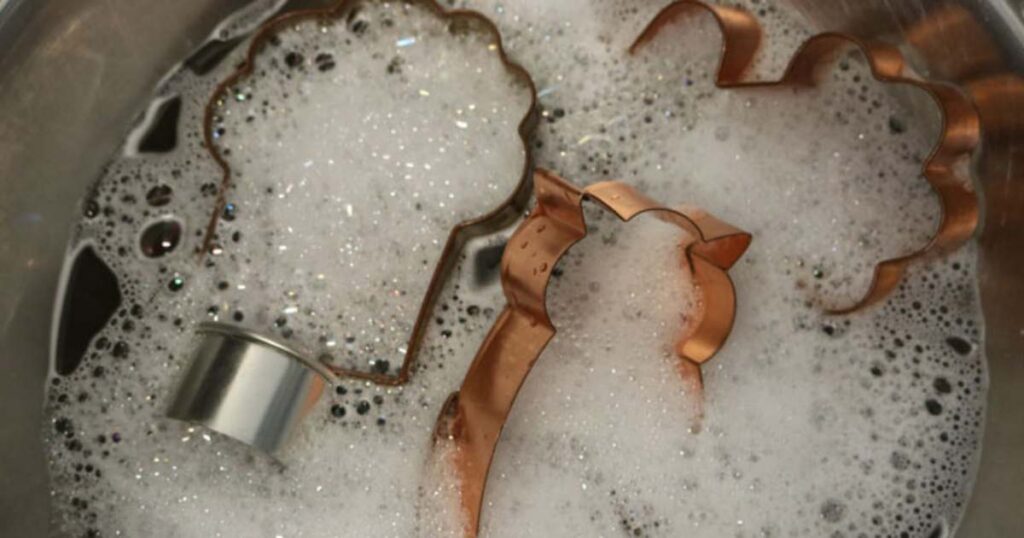
Proper cleaning and maintenance are essential to keep your cookie cutters in top-notch condition and ready for every baking endeavor. Follow these steps to ensure their longevity:
Immediate Cleaning: Wash your cookie cutters with warm, soapy water after each use. This prevents any dough or residue from hardening and becoming difficult to remove.
Soft Brush or Toothbrush: For intricate designs or hard-to-reach areas, gently scrub away any remaining dough with a soft brush or toothbrush.
Drying: Thoroughly dry your cookie cutters with a clean towel before storing them. Moisture can lead to rust, especially for metal cutters.
Metal Cutters: If you’re dealing with metal cutters, it’s essential to prevent rust. After washing and drying, consider applying a thin layer of vegetable oil using a cloth to protect them.
Avoid Dishwashers: Unless explicitly labeled dishwasher-safe, avoid using dishwashers for your cookie cutters. Harsh detergents and high temperatures can damage both metal and plastic cutters.
Silicone Cutters: Silicone cutters are generally low-maintenance. However, ensure they are scorched before storage to prevent potential moisture-related issues.
Periodic Inspection: Regularly examine your cookie cutters for signs of wear, damage, or rust. Please address any issues promptly to prevent them from worsening.
Food-Safe Materials: When using any cleaning products, ensure they are food-safe and won’t leave harmful residues on your cutters.
Following these cleaning and maintenance guidelines not only extends the life of your cookie cutters but also guarantees that every batch of cookies you bake turns out perfectly shaped and flavorful.
Storing Your Cookie Cutters for Long-Term Use
When you’re looking to store your cookie cutters for an extended period, taking a few extra steps can help preserve their quality and keep them ready for your next baking project:
Clean Thoroughly: Before placing your cookie cutters in long-term storage, thoroughly clean them, as mentioned earlier. Ensure they are scorched to prevent any potential moisture-related issues.
Rust Prevention: For metal cookie cutters, rust prevention is critical. After cleaning and drying, apply a thin layer of food-grade mineral or coconut oil. This protective layer acts as a barrier against moisture and oxidation.
Individual Wrapping: For protection, consider wrapping each cookie cutter in a soft cloth or paper towel. This prevents direct contact between them, reducing the risk of scratches.
Airtight Containers: Choose airtight containers to keep dust and moisture at bay. Line the bottom of the container with a clean, dry cloth before placing the wrapped cookie cutters inside.
Labeling: If you’re storing a variety of shapes and sizes, consider labeling the containers or compartments for easy retrieval.
Storage Location: Find a cool, dry, dark place for long-term storage. Avoid areas prone to temperature fluctuations or high humidity.
Regular Checks: Even in long-term storage, it’s essential to periodically inspect your cookie cutters for any signs of rust or deterioration. If any issues are detected, address them promptly to prevent further damage.
By taking these additional measures, you’re ensuring your beloved cookie cutters remain in excellent condition, ready to help you create delicious treats whenever inspiration strikes.
Conclusion
Mastering the art of storing cookie cutters keeps your baking tools organized and ensures they stay in top-notch shape for countless delectable treats.
Each step plays a crucial role in preserving their quality, from assessing your collection and choosing the proper storage method to maintaining and cleaning your cutters.
By embracing these tips and tricks, you’re well-equipped to embark on baking adventures with perfectly shaped cookies every time. Happy baking and organized storage!
FAQs
How do you store cookie cutters in a drawer?
Consider using drawer dividers or organizers to store cookie cutters in a drawer. Place similar shapes and sizes together to prevent them from shifting around. You can also wrap each edge in a soft cloth or paper towel to avoid scratches and keep them organized within the drawer.
How do you maintain cookie cutters?
Maintain your cookie cutters by cleaning them immediately after use with warm, soapy water. Apply a light layer of food-safe oil for metal cutters to prevent rust. Store them dry to avoid moisture-related issues, and periodically inspect them for wear or damage.
How do you keep plastic cookie cutters from sticking?
Prevent plastic cookie cutters from sticking by dusting them lightly with flour before use. Alternatively, dip them in flour or powdered sugar before pressing them into the dough. This creates a barrier that minimizes sticking.
How do you store cookie embossers?
Store cookie embossers in a container or pouch specifically designed for delicate items. Keep them away from direct sunlight and moisture. Wrapping them in a soft cloth or tissue paper can help protect their intricate designs.
How do I display a cookie-cutter collection?
Use a hanging rack, magnetic strip, or clear containers to display your cookie-cutter collection. Hanging racks allow you to showcase the cutters while keeping them accessible. A magnetic strip adhered to a cabinet door is perfect for metal cutters. Clear containers or glass jars provide visibility and protection.




